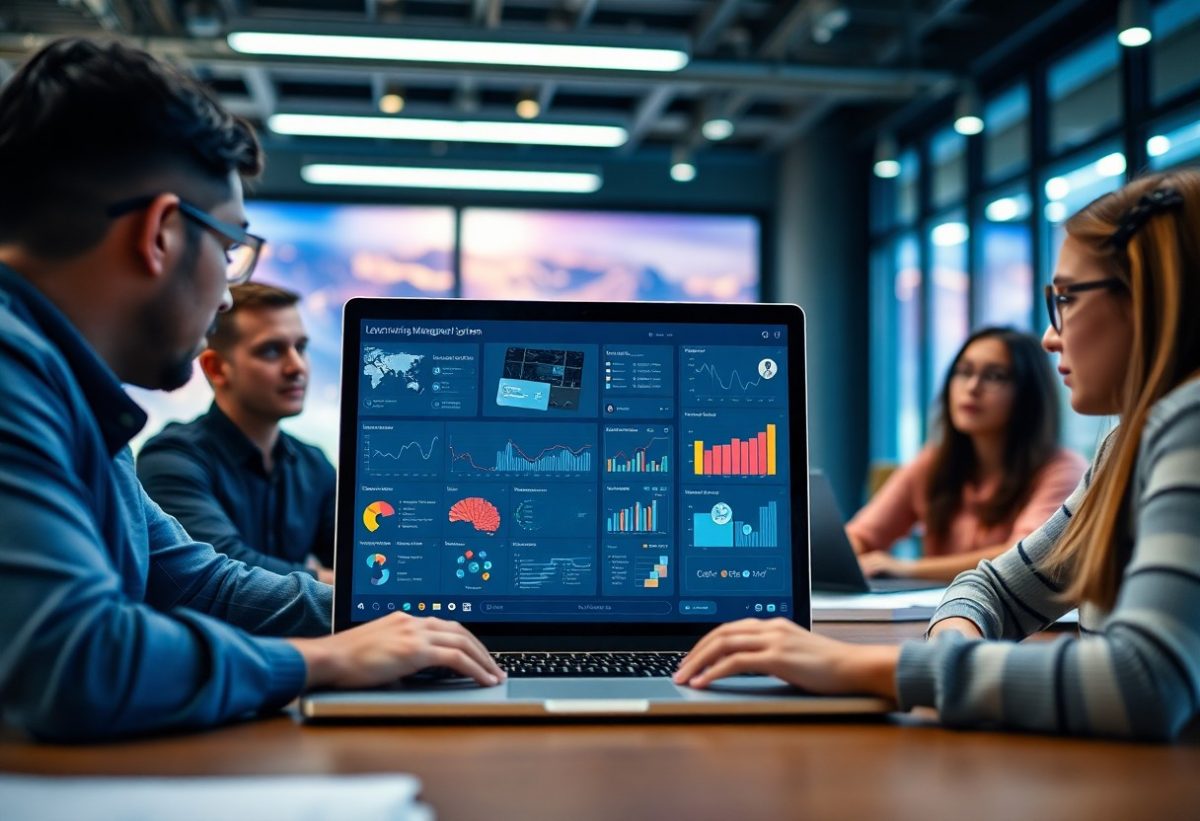LMS platforms serve as the backbone of modern education and training, making user experience a vital factor in their effectiveness. To maximize your learning outcomes, it’s important to understand the key elements that contribute to an exceptional user experience within these systems. From intuitive navigation to engaging content, each aspect plays a significant role in ensuring that you and other users can access knowledge effectively and efficiently. In this post, we will explore these critical elements that define the zenith of user experience in an LMS.
Understanding User Experience in Learning Management Systems
While navigating the digital landscape of Learning Management Systems (LMS), it’s vital to grasp how user experience (UX) shapes your interactions. A positive UX not only enhances usability but also contributes significantly to overall learning effectiveness. By focusing on intuitive design and learner needs, an LMS can foster an engaging environment that promotes knowledge retention and satisfaction.
Definition of User Experience (UX)
Management of user experience (UX) involves the process of optimizing the overall interaction you have with a digital product or service. It encompasses various factors, including usability, accessibility, and emotional response. In the context of an LMS, a well-designed UX takes into account your needs, preferences, and learning styles to create a seamless and enjoyable educational experience.
Importance of UX in LMS
One of the primary reasons UX is vital in LMS is that it directly impacts your motivation and engagement levels. A streamlined and pleasant user interface encourages you to explore content and interact more deeply with learning materials.
Learning in a system with exceptional UX not only makes the process enjoyable but also supports your retention of information. By minimizing frustration and enhancing navigation, you are more likely to engage with the course content and revisit materials, fostering a continuous growth environment. An investment in a positive UX ultimately leads to improved educational outcomes and a more fulfilling learning journey for you.
Key Elements of an Optimal User Experience
There’s no denying that an optimal user experience in an LMS involves a blend of intuitive design, seamless functionality, and user-centered features. Each element plays a significant role in how effectively you can engage with the learning material. By prioritizing these core components, you can create an LMS environment that not only supports learning but enhances it, making your educational journey more enriching and enjoyable.
User Interface Design
Against a backdrop of digital learning, a well-crafted user interface is imperative. Your experience hinges on how visually appealing and user-friendly the interface is, impacting your ability to interact with the platform effortlessly. Cohesive design choices that prioritize readability and accessibility are vital for keeping you focused on your learning objectives.
Navigation and Accessibility
Behind the scenes, effective navigation and accessibility are fundamental to your experience. A well-structured LMS allows you to easily locate courses, materials, and features, minimizing frustration and maximizing engagement. You should feel empowered to explore and utilize all resources available without facing unnecessary barriers.
Elements such as search functionality, organized menus, and clear labeling contribute significantly to how easily you navigate the LMS. If everything is logically arranged and accessible, you will save time and effort while focusing on learning. Accessibility features like keyboard navigation and screen reader support also cater to diverse user needs, ensuring that you can experience the platform fully, regardless of any physical or technical challenges you may face.
Personalization and Adaptability
Clearly, personalization and adaptability are vital components of an effective Learning Management System (LMS). You expect a platform that tailors the learning journey to meet your specific needs, preferences, and pace. A customizable experience allows you to engage more deeply with the content, improving retention and satisfaction. When an LMS adjusts to your individual learning style, it not only enhances your experience but also supports your overall educational outcomes.
Customization Options
Customization options in an LMS empower you to tailor your learning experience. You can modify the interface, choose preferred content formats, and set personal learning goals. This flexibility helps you engage with the material in ways that resonate with your unique learning style, making your educational journey more effective and enjoyable.
Learning Pathways
For a more personalized experience, learning pathways guide you through tailored educational journeys based on your skills and goals. These pathways allow you to progress at your own pace while focusing on areas that matter most to you. This ensures that the learning blocks align with your interests and career aspirations, making your education relevant and impactful.
Hence, incorporating personalized learning pathways ensures that you are not just a passive recipient of information but an active participant in your education. You can choose or modify pathways based on your evolving interests or requirements, thus allowing for a dynamic and engaging learning environment. By doing so, an LMS fosters a sense of ownership over your educational experience, encouraging more sustained engagement and motivation throughout your learning journey.
Engagement and Interactivity
For a successful learning management system (LMS), engagement and interactivity are key components. They facilitate a more dynamic learning environment that keeps learners motivated and invested in their educational journey. Incorporating interactive elements, such as quizzes and activities, can enhance comprehension while allowing you to apply new skills in real-world scenarios. Ultimately, a well-designed LMS fosters an immersive experience, drawing you in rather than merely delivering content.
Gamification Techniques
Before implementing gamification techniques, consider how they can transform your LMS experience. By integrating game-like elements such as rewards, levels, and competition, you can motivate learners to participate actively. This approach not only boosts engagement but also encourages consistent progress, making learning both enjoyable and effective.
Collaborative Tools
On your journey through an LMS, collaborative tools play a significant role in enhancing the learning experience. These features encourage peer interaction, allowing you to share knowledge, ideas, and feedback with fellow learners. Through discussion forums, group projects, and social networking capabilities, you can cultivate a sense of community that supports your educational goals.
But the benefits of collaborative tools extend beyond mere interaction. They can enhance critical thinking and problem-solving skills as you engage in discussions and work on projects with others. Additionally, collaboration fosters an environment of shared learning, which can help you gain diverse perspectives and insights while developing interpersonal skills that are vital in professional settings. Embracing such tools within your LMS will enrich your overall learning experience and create a supportive community among your peers.

Support and Feedback Mechanisms
To enhance your experience within a Learning Management System (LMS), robust support and feedback mechanisms are necessary. These elements empower you to navigate challenges effectively, receive guidance when needed, and ensure that your learning journey is optimized and interactive. A well-structured support system stands as a pillar for your success in utilizing the LMS effectively.
Help Resources
Behind every effective LMS lies an array of help resources designed to assist you in overcoming obstacles. These resources may include detailed FAQs, tutorial videos, and user manuals, all aimed at providing you with quick answers and step-by-step guidance to enhance your understanding of the platform. Access to these resources ensures you are not left in the dark while trying to utilize the LMS effectively.
User Feedback Channels
Between various educational platforms, the ability to communicate your thoughts and suggestions is vital for continuous improvement. User feedback channels, such as surveys and discussion forums, allow you to share your experiences and insights, ensuring that your needs and preferences are addressed. This two-way communication not only enhances your experience but also contributes to the evolution of the LMS.
For instance, many LMS platforms implement regular surveys that solicit your experiences, opinions, and suggestions on functionality and content. This feedback is invaluable, as it guides platform enhancements and updates to better suit your learning preferences. Additionally, direct channels such as chat support or community forums allow you to express concerns in real time, fostering a sense of community and support around your learning experience. Such mechanisms create a feedback loop that amplifies your voice and promotes user-centric development of the LMS.

Integration and Compatibility
Keep in mind that a seamless user experience in a Learning Management System (LMS) hinges on its ability to integrate with various tools and platforms. The more compatible your LMS is with existing systems, the easier it will be for you to manage your content, track progress, and keep your learners engaged. Smooth integration minimizes disruption and allows you to focus on accomplishing your educational goals.
Third-Party Tool Integration
Integration of third-party tools amplifies the functionality of your LMS, enhancing the learning experience. Whether it’s collaboration software, assessment tools, or content repositories, having your LMS work smoothly with these external applications allows for a comprehensive educational ecosystem tailored to meet your specific needs.
Mobile Compatibility
Behind effective learning environments is the expectation for mobile compatibility. You likely access content on various devices, and an LMS that functions seamlessly across platforms ensures that you can engage with materials anytime, anywhere. A mobile-friendly system keeps you connected and involved, fostering a more flexible and satisfying educational experience.
The choice of a mobile-compatible LMS ensures that you can access course content and interactive features effortlessly, whether you’re on a smartphone, tablet, or desktop. Responsive design and an intuitive interface are key aspects, allowing you or your learners to navigate easily. This flexibility in accessing learning materials aligns with the fast-paced, on-the-go lifestyle many people lead today, making it crucial for an engaging learning experience.
To wrap up
Presently, understanding the elements that contribute to the zenith of user experience in a Learning Management System (LMS) enables you to create a more effective educational environment. By focusing on intuitive navigation, personalized learning paths, and engaging content, you enhance the overall satisfaction and effectiveness of your LMS. Furthermore, incorporating features such as social learning opportunities and robust analytics can significantly improve user engagement. Ultimately, prioritizing these elements will allow you to foster a more positive and productive learning experience for all users.

